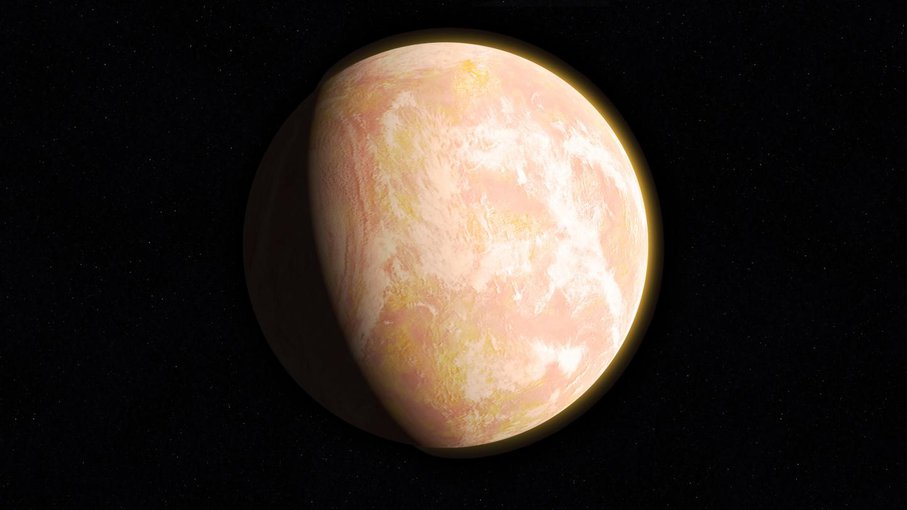
May 22, 2018
Research Highlight
Sulfur Dioxide Signatures from the Ancient Atmosphere

When haze built up in the atmosphere of Archean Earth, the young planet might have looked like this artist’s interpretation — a pale orange dot.Image credit: NASA’s Goddard Space Flight Center/Francis Reddy.
Before the Earth’s atmosphere was oxygenated, higher levels ultraviolet light made it further down into the planet’s atmosphere due to the lack of absorption by O3. This would have caused the dissociation of many molecules in the troposphere and lower stratosphere. Ultimately, this process would have affected the abundance of isotopes in the atmosphere that then left their mark in the Earth’s geological record, such as the sulfur mass-independent fractionation observed in Archean sedimentary rocks. In a recent study, researchers examined how this process could have affected the signature of sulfur dioxide in ancient sedimentary rocks.
The study, “VUV pressure-broadening in sulfur dioxide,” was published in the Journal of Quantitative Spectroscopy and Radiative Transfer. The work was supported by NASA Astrobiology through the Exobiology Program.